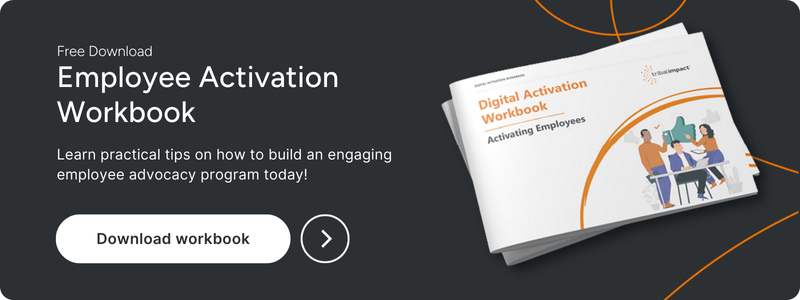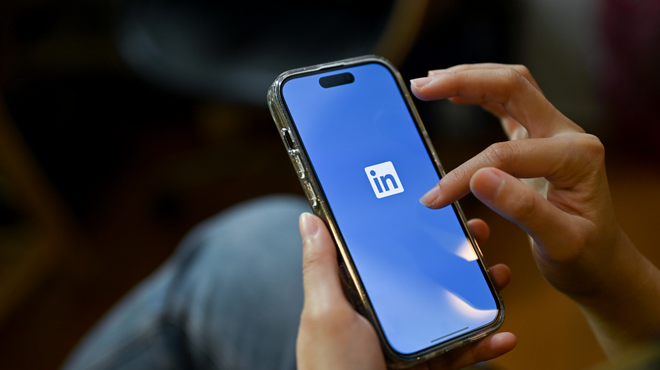While the main goal of employee advocacy isn’t always recruitment, it can play a huge role in attracting the right kinds of talent to your business.
73% of millennials found their last role through social media. And a Nielsen study found that 92% of people will trust a recommendation by a friend or a family member over any kind of marketing or advertising.
Compare this to the findings from Edelman’s Trust Barometer – that just 44% of people trusted recommendations from a CEO – and you can see the difference having employees who are active on social media could make.
Employees are only going to be vocal about a workplace on social media if they’re truly happy and engaged in their role.
It’s going to be obvious to anyone reading a post if an employee is copying and pasting what HR, marketing, or comms has told them to share. The voice will be different – probably business-ease – the post will focus on the business, and it won’t contain the employee’s opinion.
It’s just as transparent – but far more honest – when an employee posts about a role in their own words.
Shares which only include a link to a company post will never be as impactful as something more personal.
Empty shares don’t tell potential applicants about workplace culture, or what they could get from the role. Which can make some people more reluctant to apply.
These types of posts also reflect how little guidance a business has given an employee about what works on social media and how to use it from a business perspective. Not a great look to someone who’s active on social media and may already be using it in their current role.
Compare this type of share to one where an employee explains something about what they love about their role and the workplace culture. It’s honest, it’s personal, and it creates a deeper connection with anyone who finds that post.
Training Algorithms
If sharing a job posting is the first time an employee has posted on LinkedIn in two years, it isn’t going to reach very many people. The algorithm won’t know if their content is of value to anyone, since nobody has seen anything of theirs to engage with in so long. So their post will disappear into the ether, drowned out content created by more regular users of the platform.
On the other hand, if an employee is a regular poster, they’ll have a much bigger audience ready to see their content.
The engagement they’ve built up will have trained the algorithm to show their posts to more people. Meaning that when they share promotional content instead of thought leadership content, it will reach more people.
And those people may share the role with their own network, since they’ll likely have similar interests and backgrounds to the employee. The role will then reach even more people, and it could even reduce a business’s time and cost to hire because of this increased exposure.
Not only that, but Monster found that 65% of people would consider a new job opportunity if recommended by a personal connection. Showing that the personal touch really does make a big difference.
People don’t want to hear about new jobs from faceless brands – they want to hear about them from people they feel connected to; from people who are already living and working in a way they want to as well.
Showcasing Culture And Building Connections
The longer an employee has been an advocate for, the more people they can reach. They may even already know someone in their network who’s perfect for the role and can recommend them.
If they don’t, the fact that they’ve been posting regularly will mean that their audience will already understand what your workplace culture is like.
Employees don’t have to post HR-related content for this to happen; the very fact that they can share their own thoughts about work-related topics demonstrates a culture of openness and trust.
Sharing HR content never hurts too, though – it can mean people understand how the business operates and if a position there would be the right role for them.
The job will also attract people who already understand the company’s brand values because they’ve already been engaging with company content, even if they haven’t realised it because it was posted by an advocate, not a company page.
Conclusion
Employee advocacy gives potential candidates an idea of what they can expect from working with the business. Before they’ve even read the job description, they’ll be able to make an informed decision about if it’s the kind of company they want to work for. This will make them more qualified candidates when they enter the hiring process.
All this will speed up the time to hire, reduce hiring costs, and even reduce employee turnover rate. So if you’re having and not taking advantage of social media and employee advocacy, you’re missing out.


